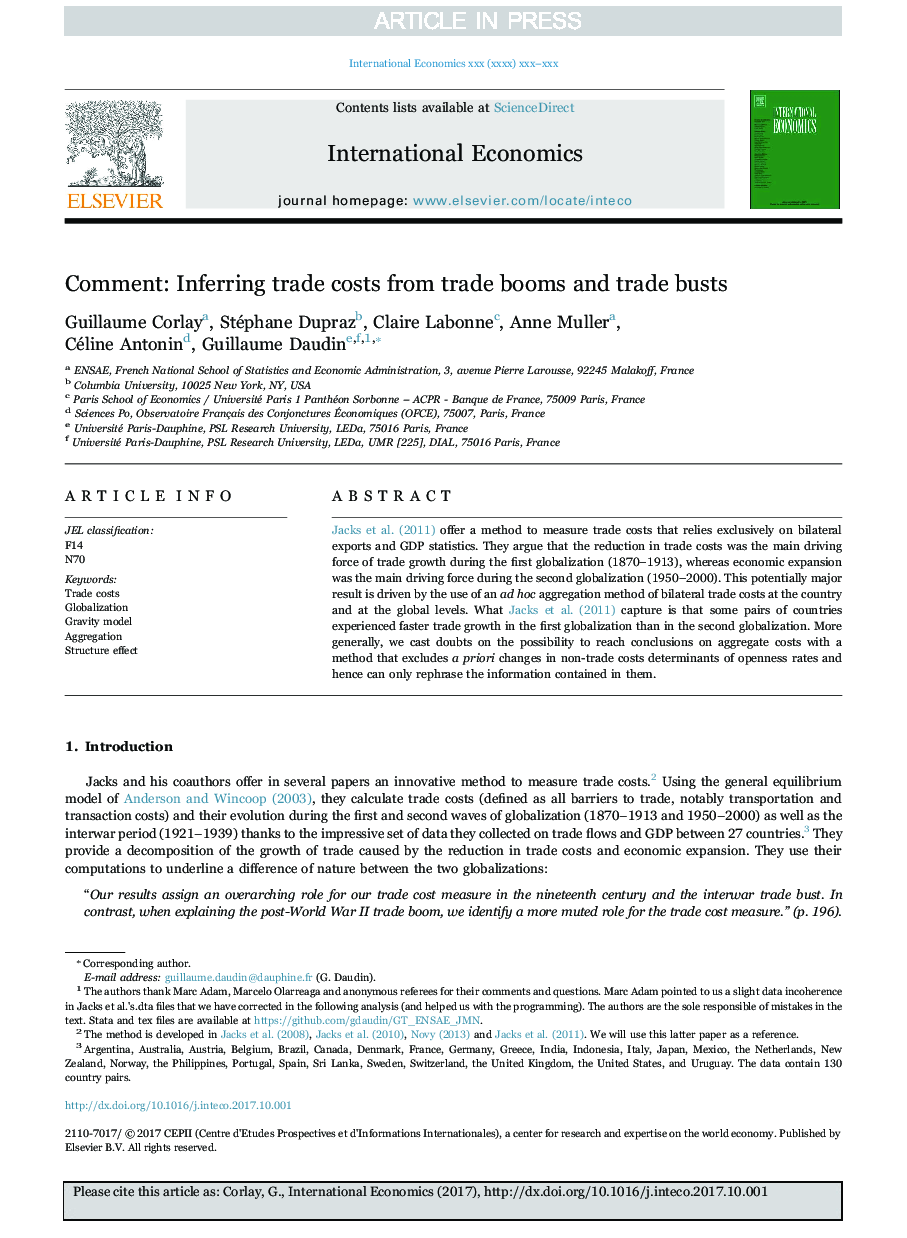| Article ID | Journal | Published Year | Pages | File Type |
|---|---|---|---|---|
| 7408056 | International Economics | 2017 | 8 Pages |
Abstract
Jacks et al. (2011) offer a method to measure trade costs that relies exclusively on bilateral exports and GDP statistics. They argue that the reduction in trade costs was the main driving force of trade growth during the first globalization (1870-1913), whereas economic expansion was the main driving force during the second globalization (1950-2000). This potentially major result is driven by the use of an ad hoc aggregation method of bilateral trade costs at the country and at the global levels. What Jacks et al. (2011) capture is that some pairs of countries experienced faster trade growth in the first globalization than in the second globalization. More generally, we cast doubts on the possibility to reach conclusions on aggregate costs with a method that excludes a priori changes in non-trade costs determinants of openness rates and hence can only rephrase the information contained in them.
Related Topics
Social Sciences and Humanities
Economics, Econometrics and Finance
Economics, Econometrics and Finance (General)
Authors
Guillaume Corlay, Stéphane Dupraz, Claire Labonne, Anne Muller, Céline Antonin, Guillaume Daudin,
